Is Your Bosch Dishwasher Wet Inside? (We Have a Fix!)

Bosch dishwashers use the latest technologies to clean, sanitize, rinse, and dry your dishes. The dishwashers come with several options for cleaning your dishes, including condensation drying. If you are used to a dishwasher that uses heat drying, you might be surprised by the results of condensation drying.
Condensation drying in Bosch dishwashers leaves the interior wet. It works by attracting water droplets to a cool, stainless-steel surface inside a Bosch dishwasher. The process may leave the interior and some dishes very wet. Let the drying cycle run longer. Clean the vent, drain, and heating element. Check the fan, thermostat, and heating element. Replace damaged parts.
Let’s take a look at the drying technologies of Bosch dishwashers, and learn how to fix problems that leave the inside of the dishwasher and dishes very wet.
Do You Need Appliance Repair Services?
Get free, zero-commitment quotes from pro contractors near you.

Bosch Dishwasher Cycles Explained
Bosch dishwashers have 8 cycles.
- Heavy: Dishes with baked-on food and grease, cycle time is 1 hour 50 minutes to 2 hours 15 minutes with temperatures of 150°F to 162°F
- Auto: Handles any type of load, cycle time is 1 hour 50 minutes to 2 hours 15 minutes with temperatures of 150°F to 162°F
- Normal: Good for routine loads, cycle time is 2 hours 10 minutes to 2 hours 15 minutes with temperatures of 131°F to 156°F
- Speed60™: Short wash and dry, cycle time is 1 hour with temperatures of 122°F to 158°F
- Rinse: Rinse only
- Glass: Loads of glassware and cutlery with a reduced temperature
- Express: Loads of delicate dishes, such as dessert dishes and glasses, cycle time is 30 minutes with temperatures of 113°F to 122°F
- Eco: Lower temperature for delicate items, cycle time is 1 hour 20 minutes to 1 hour 25 minutes with temperatures of 113°F to 144°F
Dishwashing Options
Cycles can be combined with 6 optional settings.
- Sanitize: Use with Heavy, Auto, and Normal cycles
- Delicate: Use with Heavy, Auto, and Normal cycles
- SaveTime: Energy efficiency setting to reduce cycle time by up to 25%
- ExtraShine™: Use with all wash cycles except rinse to increase rinse temperature and drying time
- Half Load: Use when the dishwasher is at 50% capacity or less
- Delay: Set a delay of up to 24 hours
Bosch Dishwasher Drying Technologies
Bosch dishwashers use 3 technologies for drying dishes.
PureDry™
PureDry™ is the basic technology that dries dishes in a Bosch dishwasher. The dishes are sanitized with 162° water, and then dried by the Bosch heating element.
AutoAir®
The AutoAir® feature on a Bosch dishwasher automatically unlocks the door at the end of the wash cycle, and the dishes air dry. AutoAir® dries dishes up to 40% faster than the PureAir® technology.
CrystalDry™
CrystalDry™ technology gets dishes 60% drier than the company’s PureDry® technology. It is best suited for glass, plastics, porcelain, and steel.
Dishwasher Condensation Drying vs. Heat Drying
Bosch dishwashers use condensation and heat drying, with the former being the most recent advancement in automatic dishwashing. Heat drying works by creating hot air inside the unit with a heating element. The hot air is circulated with a fan. The movement of hot air evaporates the water on your dishes, turning it into steam. The steam is removed from the interior of the dishwasher through a vent.
Heat drying uses a great deal of energy, so manufacturers are turning to condensation drying. After the wash cycle, your dishes are rinsed with hot water. The interior of the dishwasher is built with stainless steel that has a surface cooler than the rinse water. Through a bit of science, the cooler surface of the stainless steel attracts the warm water droplets on the dishes. As the water collects on the stainless steel, it drips down the walls and out through a drain.
Heat drying increases energy use by about 15%, but it also dries the dishes and interior of the dishwasher faster than condensation drying. Your dishes are less likely to have spots with heat drying.
Why is My Bosch Dishwasher Always Wet Inside? (Causes and Fixes)
If your Bosch dishwasher is always wet inside, this may be due to the condensation technology that is used for drying the dishes. Condensation drying is used for the AutoAir® and CrystalDry™ options. Condensation drying takes longer than heat drying, and this may be why your dishes are still wet. Give the cycle some more time to remove the water droplets from the dishes and stainless-steel surface.
If the dishes are still wet when you use the heat dry option of your Bosch dishwasher, there is a problem with the heating element, vent, or drain.
Bosch Dishwasher Vent Clogged
Look for a tube that runs from the bottom of the dishwasher. The tube is connected to the dishwasher air gap. Clean the vent with a mixture of vinegar, baking soda, and hot water. Pour the mixture into the bottom of the dishwasher tub, and let it sit for about 15 to 30 minutes. Run the Rinse cycle.
Bosch Dishwasher Heating Element Not Working
If your heating element is not working, try removing any hard water scale. Use hot water and a few drops of dishwashing detergent to gently wipe down the heating element. If this doesn’t work, replace the heating element.
Bosch Dishwasher Drain Clogged
The drain of your Bosch dishwasher is located in the base of the tub. Remove large food particles. Pour a mixture of vinegar, hot water, and baking soda in the bottom of the tub. Let it sit for about 15 to 30 minutes, and run the Rinse cycle.
Bosch Dishwasher Turned Off Heat
If your Bosch dishwasher stops during the drying cycle, leaving your dishes very wet, it is the fan, thermostat, or heating element. Check to see if the fan is running during the drying cycle. If it isn’t, replace it.
If the fan is running, the problem may be the thermostat. The high-limit thermostat monitors the temperature of the heating element to make sure that it doesn’t’ get too hot. This is a safety mechanism of your dishwasher. Hold your hand about 2” from the heating element. Don’t touch the heating element. If the air around the heating element is cool, replace the thermostat. If the air around the heating element is warm to hot, the heating element is faulty and needs to be replaced.
Related Questions
Should you leave a dishwasher door open to dry?
You can open the door of your dishwasher to let the dishes air dry. You may have spots on your dishes.
Which Bosch dishwasher dries best?
Heat drying works better than condensation drying, but it also uses more energy. When you use heat drying, it takes less time, and you won’t have spots on your dishes. Use the PureDry™ option on your Bosch dishwasher to dry the dishes in the shortest amount of time.
Does a rinse agent help with condensation drying?
Yes. Rinse agents reduce the surface tension of water. This causes the water to break down into tiny droplets that evaporate more easily. Tinier droplets mean fewer, smaller spots on your dishes.Your Bosch dishwasher has a rinse aid reservoir on the interior of the door. You can see the level of the liquid through a small window nest to the inlet. Fill the reservoir until the window is full with the rinse aid solution.
Can I use regular dish soap in a dishwasher?
No. Dish soap is designed to make bubbles. Dishwasher soap does not make bubbles. If you put even a tiny amount of dish soap into the reservoir of a dishwasher, be prepared to have a kitchen filled with bubbles.If you run out of dishwasher soap, make some at home. Combined water, white vinegar, kosher salt, and diced lemon. You can also use diced orange. The citrus helps to break down food and freshens up your dishwasher.
Do You Need Appliance Repair Services?
Get free, zero-commitment quotes from pro contractors near you.

Summary
Bosch dishwashers are designed with innovative technologies that reduce energy consumption. The dishwashers are available with heat drying and condensation drying. PureDry™ is the company’s heat drying method. With an AutoAir™
Dishwasher, the door is automatically opened at the end of the wash cycle, and the dishes air dry. The drying method gets your dishes 40% drier than Bosch’s PureDry™ technology. CrystalDry™ is the company’s condensation drying technology. It gets your dishes 60% drier than the PureDry™ technology.
Heat drying works faster and reduces spots on your dishes, but it also uses a lot of energy. Condensation drying leaves the interior of the dishwasher very wet, and you may have water on your dishes, as well.
Condensation drying starts by rinsing the dishes with very hot water. Water droplets from the dishes collect on the cooler stainless-steel interior of the tub. As the water collects, it drips down the sides of the tub and into a drain.
If the interior of your Bosch dishwasher is very wet, or if the dishes are still wet after the dry cycle, try a different dry option. Clean the vent, drain, and heating element. Check the fan, thermostat, and heating element. If these parts are not working, replace them.

Jennifer L. Eggerton loves being hands-on, whether it's with a home DIY project, making repairs, re-decorating a room, or keeping life organized. She enjoys helping people by sharing her knowledge, insights, and experiences, as well as her lessons learned. In addition to her work as a writer, Jennifer is a Jeep® overlander, self-published author, and nature photographer who loves being outdoors.
More by Jennifer Eggerton



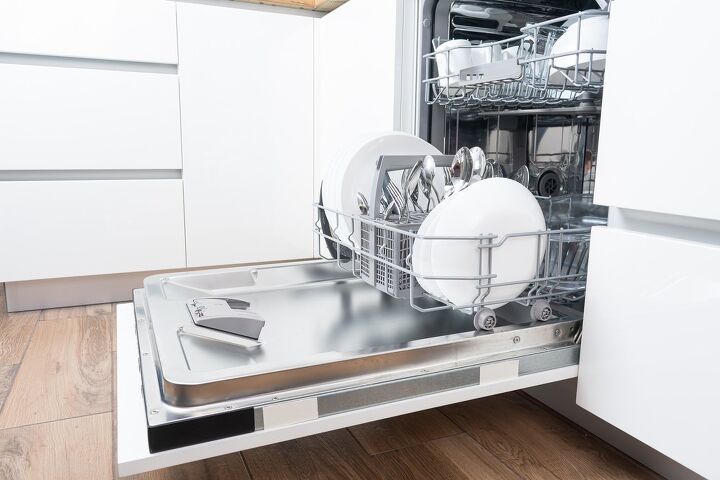
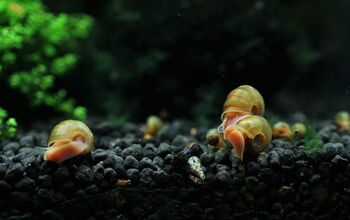





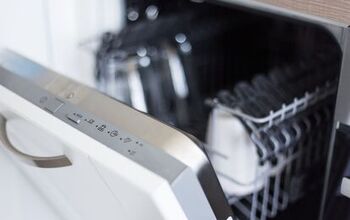

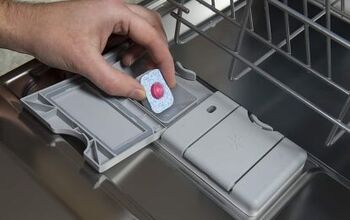
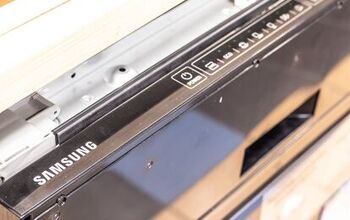













![How To Reset A Whirlpool Cabrio Washer [In 5 Easy Steps!]](https://cdn-fastly.upgradedhome.com/media/2023/07/31/9076531/how-to-reset-a-whirlpool-cabrio-washer-in-5-easy-steps.jpg?size=350x220)